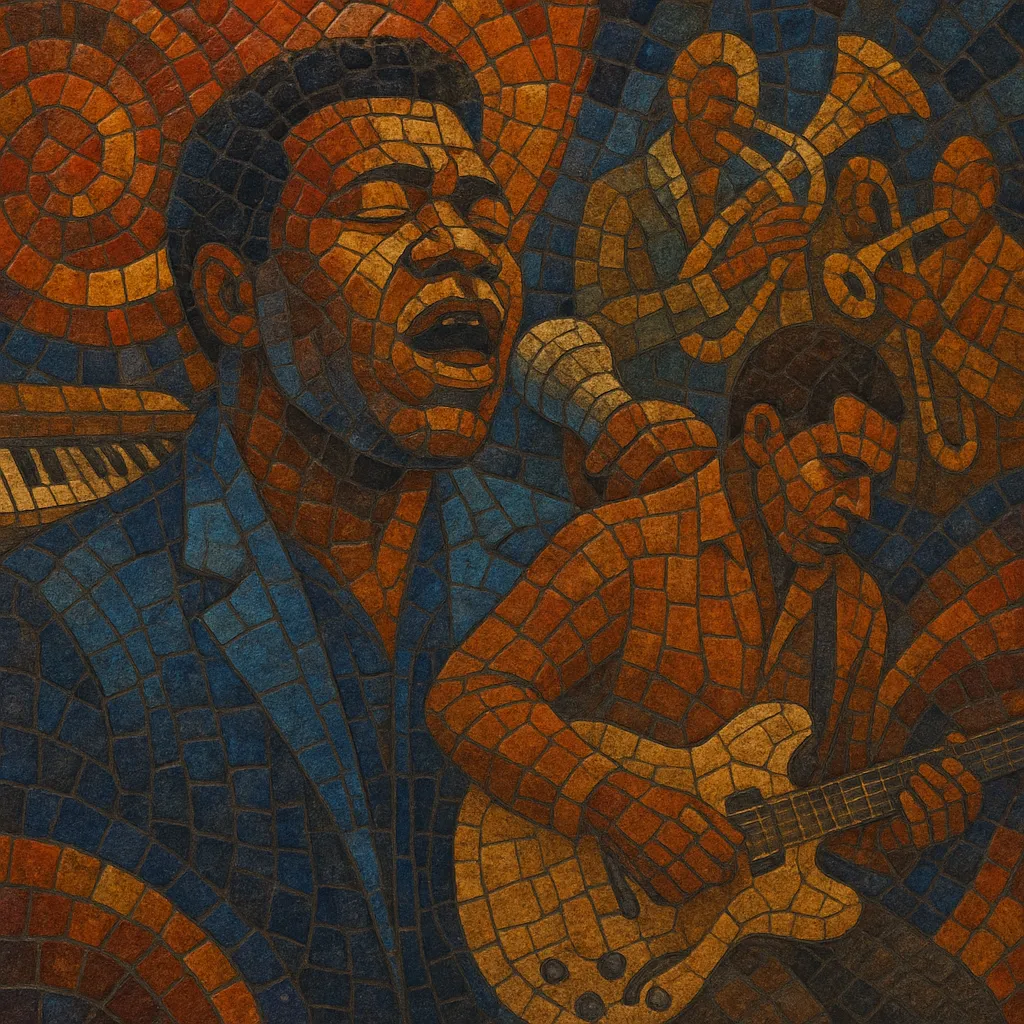
Soul blues is a hybrid of electric blues and Southern soul that foregrounds gospel-inflected vocals, horn-driven arrangements, and blues-based song forms.
It typically features gritty, emotive singing over mid-tempo grooves, with Hammond organ, punchy horn stabs, and guitar fills weaving around I–IV–V progressions broadened by rich 7ths, 9ths, and 13ths.
Lyrically, it focuses on love, heartbreak, resilience, and real-life struggles, delivered with the testifying fervor of the church and the storytelling directness of the blues.
Soul blues emerged in the United States during the 1960s as urban electric blues intersected with the sound of Southern soul labels and studios, most notably in Memphis, Muscle Shoals, and Jackson. Blues singers and guitarists embraced gospel phrasing, backbeat-heavy rhythm sections, Hammond B‑3 organ, and horn sections characteristic of Stax- and Hi‑Records-style soul. Artists like Bobby "Blue" Bland, Little Milton, and O.V. Wright exemplified the blend: blues structures and guitar tones wrapped in lush, church-bred vocal delivery and brass arrangements.
By the 1970s, the style was solidified on the southern chitlin’ circuit, where artists such as Johnnie Taylor, Denise LaSalle, and Z.Z. Hill recorded hits that combined blues grit with soul polish. Memphis and Jackson studios remained strongholds, and the genre thrived on radio formats that favored deep soul and contemporary blues. Horn charts, string sweetening on ballads, and steady mid-tempo shuffles became key identifiers.
The 1980s saw both continuity and renewal: Z.Z. Hill’s success helped re-center soul blues on mainstream blues airplay, while Albert King and Syl Johnson brought the Stax/Hi aesthetic to blues audiences. Robert Cray’s sleek, modern productions brought soul-blues sensibilities to wider rock and pop listeners. Independent labels and blues festivals sustained the style through the 1990s and 2000s, with many veteran singers continuing to tour and record.
Soul blues remains a cornerstone of the modern blues scene. Its influence is heard in contemporary "modern blues" productions that favor warm analog textures, big backbeats, and expressive vocals. The genre’s enduring appeal lies in its emotionally direct songwriting, church-steeped vocal power, and timeless blend of groove and guitar.
Use a tight rhythm section (drums, electric bass), electric guitar with a warm overdrive or clean bite, Hammond B‑3 organ with Leslie, and a horn section (trumpet, tenor/alto sax, sometimes trombone). Aim for mid-tempo backbeats (around 70–110 BPM), shuffles in 12/8 for ballads, and steady 4/4 pocket grooves for dancers.
Build from blues forms (8/12/16-bar variants, often 12-bar) but enrich them with soul vocabulary: dominant 7th/9th/13th chords, IVmaj7 color tones, and ii–V turnarounds. Common keys favor horns (F, Bb, Eb). Use verse–chorus with a memorable hook; add a bridge or a dynamic breakdown to elevate the final chorus.
Write vocal lines that invite gospel-style expression—melisma, call-and-response with horns or backing singers, and dynamic swells. Lyrics focus on love, heartbreak, perseverance, and everyday life. Keep the storytelling direct and conversational, allowing room for expressive ad-libs and testifying endings.
Craft horn parts that punctuate vocal phrases with stabs, falls, and short riffs. Layer simple two- or three-part voicings that lock with the snare backbeat and bass movement. The organ provides pads and swells; guitar comping should be economical, leaving space for vocal phrasing and horn responses.
Favor lyrical, economical solos rooted in the minor pentatonic and blues scales, seasoned with Mixolydian color. Use bends, vibrato, and call-and-response motifs rather than fast runs. Keep solos song-serving, building to emotional peaks rather than technical displays.
Prioritize warmth and punch: dry-to-moderate room ambience, cohesive horn section imaging, and present vocals. Tape-style saturation or analog emulation helps glue the mix. Let the kick and snare lock with bass; keep guitars and organ out of each other’s frequency lanes.

